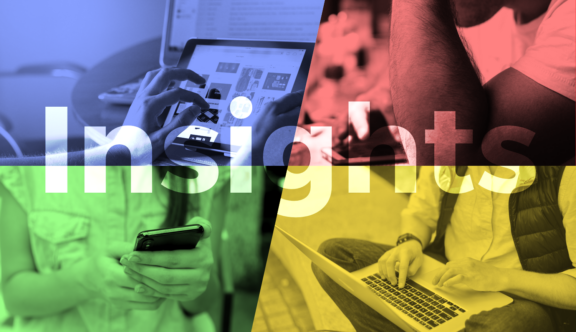“As a business owner & digital marketer, I’ve spent hours of my life analysing quantitative data – looking at things like time spent on site, exit rates and bounce rates. Whilst this is always an interesting process, it can often feel as if there’s an overload of customer data, but minimal customer insights.”
The question is, why don’t marketers make up for this gap in qualitative insight data by just simply conducting more user testing? Maybe because they feel it’s not worth it or simply it’s just because its embarrassing hearing what others think about the website navigation you and the team have spent hours or days working on. Okay, months!
Embarrassing, but incredibly powerful. By running a process of usability tests, your understanding of human psychology will improve and you’ll understand better, that people don’t usually think and act in just one way. There are obvious patterns, of course, but NEVER one journey to checkout or goal completion.
Once you understand how different people interact with websites in various ways, you’ll quickly recognise that it’s impossible to design with only one person’s character in mind.
Instead, you need to actively categorise users according to a number of personas and behaviour types. Once you’ve managed to do this, you can use these behaviour traits to build your design and make it work for the target audience.
Let’s check out some psychological frameworks I learnt from Bryan Eisenberg, a pioneer in online marketing, improving conversion rates, persuasive content and persona marketing and helping organisations improve their customer experiences. But, before we explore these frameworks, it’s vital to understand that people are not just ‘one type’, or even four for that matter. People change due to multiple mindsets and contexts. However, by implementing design, based on all four types, we can cover the basic top-level patterns.
Behaviour type 1 – The competitive, direct & impatient: Fast paced and logical (seen in the first video above)
- Wants to understand things fast, with facts
- Scans headers, bullet lists, icons, and reads only a few words
- Soon gets frustrated by bugs or lack of clarity
Make sure you include: a prominent search function so they can go where they want immediately. Also, ensure you clearly highlight the top categories and benefits, because these people won’t spend time reading through your site. Finally, add the value propositions like ‘Express delivery’ or ‘Free Shipping’ at the top of every page within the funnel to embed why the users should be buying from you.
Behaviour type 2 – The methodical: Logical and detail driven (as seen in the second video above)
- Wants to make an informed choice, using research
- Scrolls through the whole page and even reads long paragraphs in small font sizes
- Wants to evaluate and compare
- Trusts experts, reviews, and articles.
- Won’t be rushed, so be careful using countdowns and contests.
Make sure you include: loads of stats, facts and figures, and a clearly displayed detailed comparison chart or table. Ensure you are adding plenty of ‘read more’ links too, so users can access relevant content, expert guides or similar. I would also suggest including comprehensive FAQs so shoppers or users can explore the detail.
Behaviour type 3 – The spontaneous: Fast paced and emotional
- Decisions are influenced by feelings
- Follows brands and trends to create a lifestyle
- Prefers images to small text or long paragraphs
- Responds well to persuasion techniques. Eg. countdowns and influencers
- Uses shortcuts to understand the world. Eg. high price equals high quality
- and easily distracted during the purchase process
Make sure you include: lots of lifestyle imagery, with a clear and powerful up-front offer that is appealing to their spontaneous personality. Also, add some influencer-related content too, as this is going to really resonate with their lifestyle goals. Try to also add a most popular featured section to cater for their impatience, as they won’t want to read reviews and consider comparisons.
Behaviour type 4 – The humanistic: Slow paced and emotional
- Influenced by creativity, storytelling, social belonging
- Trusts the opinions of friends and user reviews
- Enjoys images, especially if they show people’s emotions
- Loyal to sales people and brand interactions they like
Make sure you include: Strangely, similar to behaviour type 3, these particular users are inclined to inspirational lifestyle images and influencer like content. Rather than display simple reviews to these users, showcasing customer quotes will be very powerful, particularly when a previous customer has written passionately about their experience.
So, now you have the perfect mix!
You’ll quickly find, by combining both your qualitative and quantitative research; conducting user testing; and designing for a number of behaviour types, customer data won’t feel as daunting or anonymous as you’ve previously found.
This way you’ll be in a better position to focus on what your users want and need, as opposed to what you’d like to say. Therefore, resulting in more chances of them using you.
Would you like to unlock more conversions?
Get in touch, We’d be delighted to hear from you.




